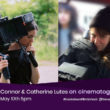Kitty Green discusses crafting the sound design of The Assistant by recording office sounds and using them to create tension and discomfort.
Listen to the podcast on The Assistant and Promising Young Woman.
Read about why Matthew MacFadyen’s performance in the film is so great
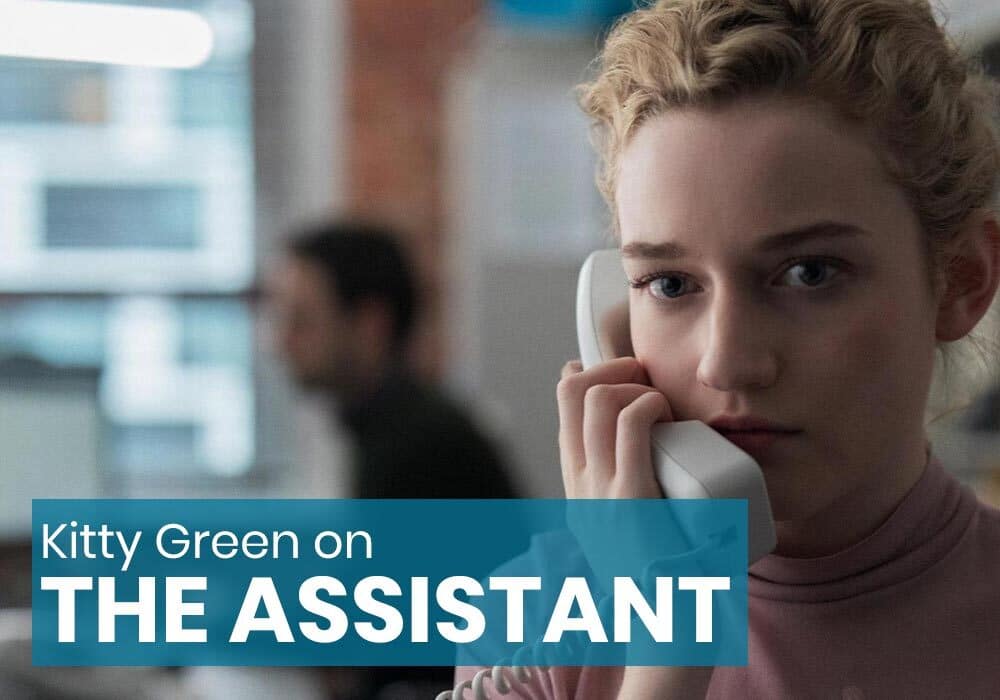
In the first shot of The Assistant, director Kitty Green introduces us to protagonist Jane (an excellent Julia Garner) as a small figure in a dark, unwelcoming New York City. She climbs into a cab before sunrise and makes her way to her job as a film producer’s personal assistant. The sound of her footsteps are swallowed up by a whirring industrial soundscape that builds tension and unease like a horror movie, establishing The Assistant’s portrait of a young woman living and working in an environment that is apathetic, or even antagonistic, toward her. On the drive to her office block, she stares bleary-eyed out of the cab window as a hundred anonymous office windows fly by, each of them identical to the window out of her boss’s office, which is clouded slightly to protect the privacy of those inside. While Green’s film retains its laser focus on Jane’s subjective experience during one horrific day at work, this visual cue acknowledges that her awful boss is one of many who continue to get away with terrorising women in the workplace.
“I was trying to make sure that anyone could identify with her [Jane’s] story,” Green told me over the phone. “The more personal details we gave her, the less accessible she became to other people.” I had asked her about the opening shot, which is a wide of Jane’s house as she leaves for work in the morning, and why we never actually see inside that house or gain any real insight into Jane’s personal life at all. “There is something about giving the audience room to imagine who she is and what her background is. Nobody even says her name in the whole movie; it’s only in the credits. She’s kind of anonymous in this sense; she can be any one of us. There was never a version of the script where we had more information. There was probably a version where there was less, and I was asked to add a tiny bit more. The parents [to whom we hear Jane speak over the phone twice in the film] was an addition in that sense.”
Kitty Green’s film chronicles how insidious, powerful men like Jane’s Harvey Weinstein-esque boss (who is never seen on screen and only referred to as “him” or “he”) infect every aspect of office life, even mundane tasks like photocopying and printing. Green lingers on these banal tasks to draw out suspense and to draw us into Jane’s subjectivity. “I was interested in tasks that anyone in any entry level position would do,” Green explained. “A lot of photocopying, filing, coffee, mail, that sort of stuff. I tried not to focus on the things she [Jane] was suspicious of. I wanted to make sure the balance felt right. Maybe seven or eight tasks that were banal went by, and then the ninth one was a little worrying. Otherwise, the film wouldn’t have had as much weight.”
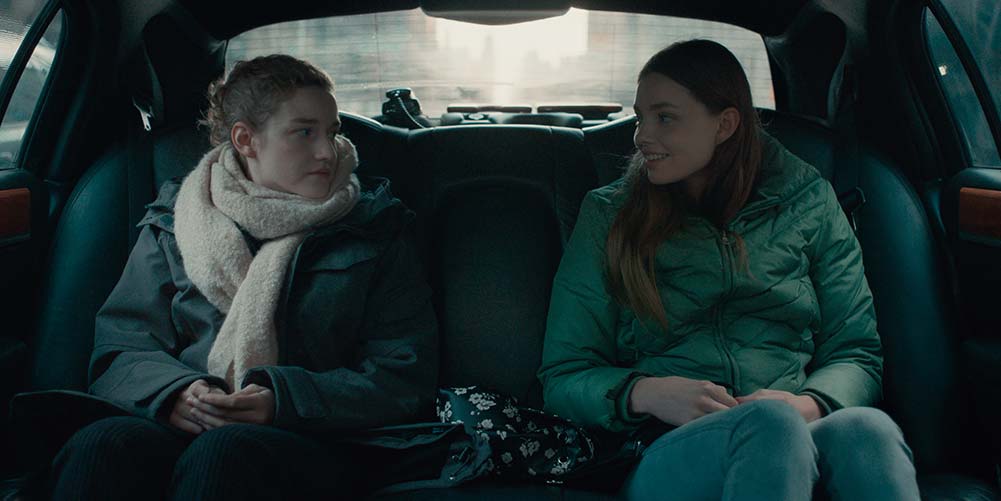
Jane (left) escorts a newly employed assistant to meet her boss at a hotel.
As these tasks unfold, we feel the same frustration of waiting as Jane feels, and it gives us a chance to watch Garner’s subdued but always slightly disconcerted expression. The more evidence she gets that her boss is sexually exploiting women, the less she is able to hide the anguish and anxiety she feels about enabling him. Green noted with a chuckle that most of the test screenings for the film were to see, “when people were shifting in their seats, and how long can we stay on the photocopying and the coffee maker and the blender.”
Jane seems to be drowning under the piling weight of her guilt and worry from witnessing multiple signs of exploitation: a stray earring that belongs to a flustered woman, a young and unqualified girl being hired as an assistant and sent to meet Jane’s boss in a hotel room. Jane’souterwear is a massively oversized, puffy coat and a huge scarf that almost swallow her whole. Green and her longtime cinematographer Michael Latham chose to shoot Jane so that the smaller she feels, the smaller she is in the frame. “I wanted it to feel very claustrophobic. There is a sense that she’s almost sinking within the frame, as if the office is swallowing her up. She gets a bit more head room as we go along.”
It’s not just the indiscretions of her unseen, unnamed boss that weigh on Jane: microaggressions from other men in the office build a portrait of a work environment that’s hostile because of pervasive misogyny. Jane works in a room with two other male assistants who treat Jane like a servant rather than a co-worker, because she’s a woman. “One (Jon Orsini) is kinder to her, and one (Noah Robbins) is a little more…” Green struggles to find a polite way to put it — I want to interject with “a little more of a dick?” — but I let her settle on “not as friendly.” Green continued, “I think one of the most violent lines of the film are when [Jane buys lunch for the office, and] he says, ‘I wanted [a] chicken [wrap]. This is turkey.’ He says it with such disdain. There’s something so vile about the way he says that line.” Robbins’s character is the worst offender: he expects Janer to get him food, to deal with their boss’s disgruntled wife, and to handle a colleague’s restless children — all gendered tasks that require emotional labour.
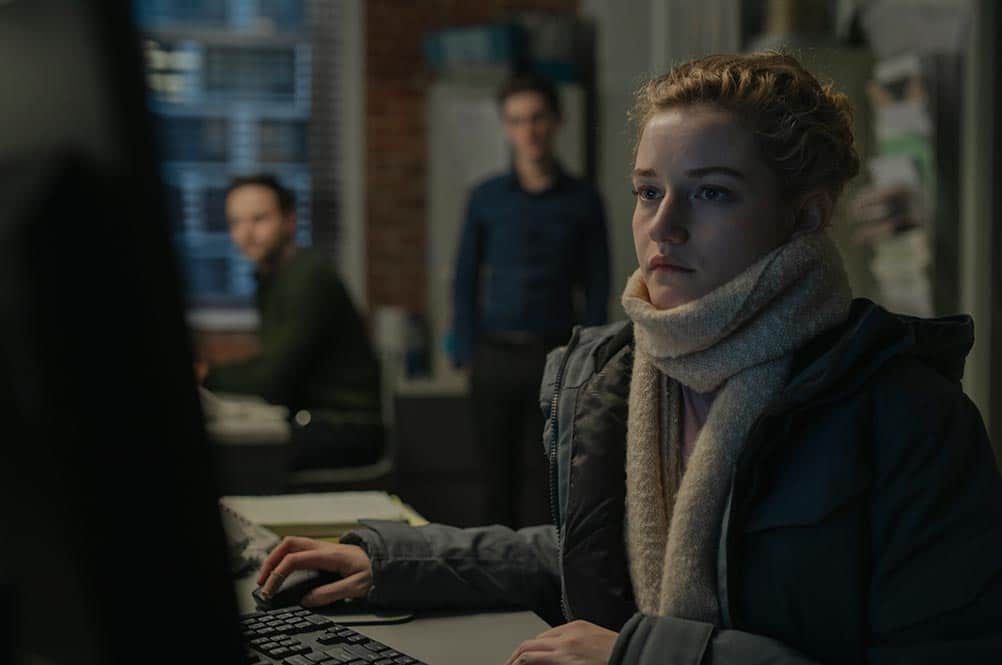
Jane writes an email to her boss while her two male colleagues watch on.
One of the most brilliant elements of The Assistant is it’s unsettling, tense sound design, which was largely a collaboration between Kitty Green and sound designer Leslie Shatz. (Our interview with Shatz, who worked in the sound department of several of Kelly Reichardt’s films, will feature in our upcoming ebook, Roads to nowhere: Kelly Reichardt’s broken American dreams.) Together, Green and Shatz transform normal office sounds into the stuff of nightmares: the overhead lights turn on with a deafening buzz; the inane, overlapping conversations of coworkers make it impossible to concentrate; and the crunch and whir of a blender churning ice feels like it’s embodying the building pressure in Jane’s head.
“I adore [Leslie] and have been a big fan of his for a long time,” Green gushed. “Leslie Shatz had done the sound design for Elephant (2003, dir. Gus Van Sant), which is an incredible piece, taking all these high school sounds and laying them in in ways that were not traditionally how you would hear them. I asked him if we could go out and record a bunch of office stuff and play around. He got some people to record all these buzzes and hums and whirs and beeps. We tweaked them to give each scene a little more tension, slowly pitching them up in frequency or volume. We were always trying to figure out how we could create tension without using score, necessarily.”
The sounds used in The Assistant are all derived from real office environments, but their levels in the mix are highly subjective to Jane’s experience and her rising levels of horror at her environment. Green uses an example to explain the sound’s subjectivity: “There’s those Chinese men [who have a conversation next to Jane in the elevator]. At one point, someone was suggesting we subtitle them, but I was like, ‘No, the audience should only know what Julia’s character knows. They shouldn’t know any more.’”
The main notable exception is Jane’s phone calls, during which we’re removed from her subjectivity and actually know less than she knows. We hear the other line from a muffled distance rather than hearing what she’s hearing. “You don’t need to hear everything. Most of it is just logistics and planes and airports. If you give the audience too much, people hang onto it in a way that’s unnecessary.” In fact, keeping the other line mostly inaudible takes our attention away from that information and focuses it on the information that’s important: Garner’s reactions to what’s being said. “Originally, I didn’t script the other side of the phone calls and assumed you’d just hear a kind of muffled voice, but we ended up shooting a lot more closeups of Julia than I thought we would because her face is incredible. We ended up having to record those phone calls and script them in post-production.”
The Assistant has been pitched as a day-in-the-life drama that reveals the mundane yet sinister everyday life of an assistant like Jane. But really, it’s not just any day. It’s the day when Jane realises she has to choose between losing her job or becoming an enabler, and she chooses the latter. “It’s the day when she finally tries to speak up by going to the HR department and talking about her concerns and being shot down. I think she learns a lot in that day about just how difficult her position is, how it’s almost impossible to change the behaviour that’s going on in her workplace and how powerless she is to stop something that she thinks is concerning. It is a day that is defining. It gives her a little more clarity as to how oppressive the structure is.”
Read books about brilliant films by women like The Assistant and their approach to sound design…
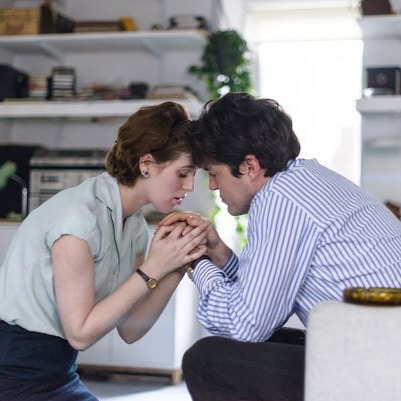
The Souvenir
Our ebook, Tour of memories: The creative process behind Joanna Hogg’s The Souvenir, is the first book ever written about Hogg.
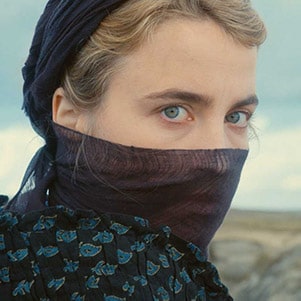
Portrait of a Lady on Fire
Our ebook, Portraits of resistance: The cinema of Céline Sciamma, is the first book every written about Sciamma.
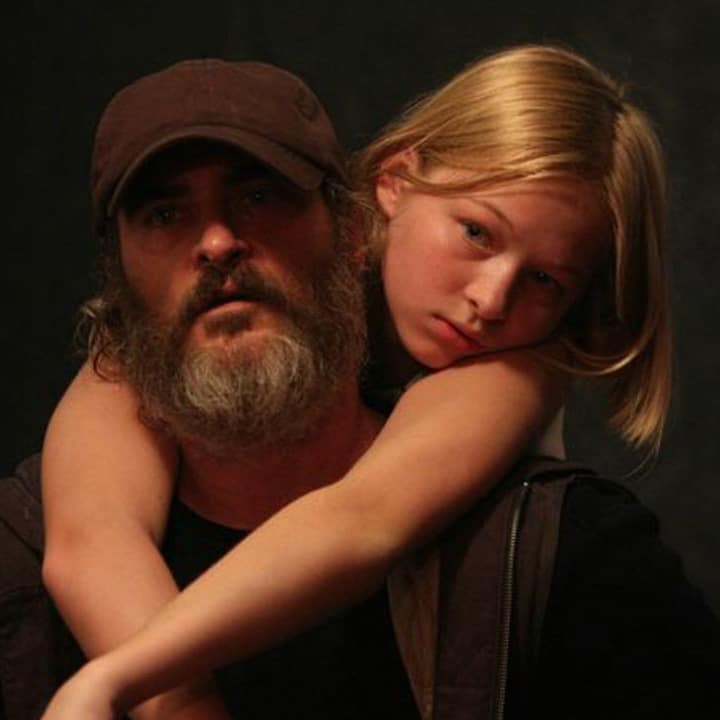
You Were Never Really Here
Our behind the scenes guide to Lynne Ramsay’s fourth feature is the essential companion to the film.
Want to read the rest of the article?
Get the ebook.
Roads to nowhere: Kelly Reichardt’s broken American dreams will take you on a journey through Reichardt’s filmography.
It’s also the only place you can find interviews with her and all her collaborators, which together reveal Reichardt’s filmmaking process like never before.

